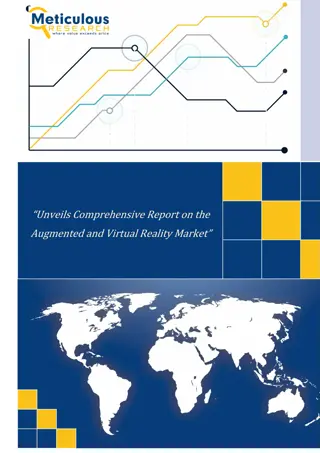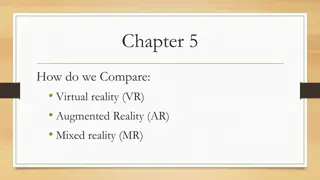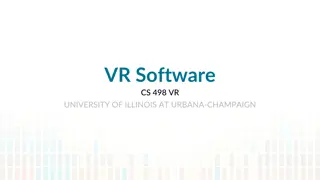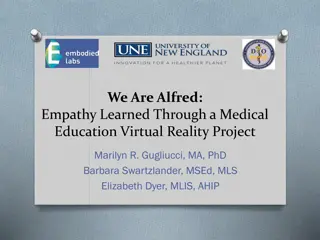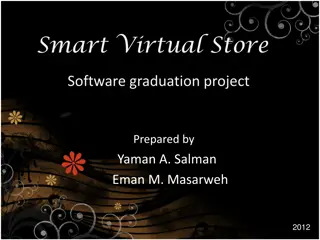Understanding Virtual Reality: Types and Uses
Virtual Reality (VR) is a computer-generated environment that immerses users in realistic scenes and objects. This technology is widely used in entertainment, gaming, cinema, amusement parks, and social virtual worlds. There are three primary categories of VR simulations: non-immersive, semi-immersive, and fully-immersive. Each category offers varying levels of immersion and interaction with the virtual environment. Non-immersive simulations allow users to be aware of their physical surroundings, semi-immersive provides a mix of virtual and real-world connection, while fully-immersive offers the most realistic experience through VR headsets. With endless possibilities for usage, VR is expanding beyond entertainment into educational and other sectors.
Download Presentation

Please find below an Image/Link to download the presentation.
The content on the website is provided AS IS for your information and personal use only. It may not be sold, licensed, or shared on other websites without obtaining consent from the author. Download presentation by click this link. If you encounter any issues during the download, it is possible that the publisher has removed the file from their server.
E N D
Presentation Transcript
Virtual Reality BY: LAYA NOWWARA 8G
What is Virtual Reality? Virtual Reality is a computer- generated environment with scenes and objects that appear to be real, making the user feel they are immersed in their surroundings.
Virtual Reality Uses Virtual reality is most commonly used in: Entertainment applications Video games 3D cinema Amusement park rides including dark rides Social virtual worlds
Virtual Reality Types There are 3 primary categories of virtual reality simulations used today: Non-immersive Semi-immersive Fully-immersive simulations
Non-Immersive Simulations This technology provides a computer- generated environment, but allows the user to stay aware of and keep control of their physical environment. Non-immersive virtual reality systems rely on a computer or video game console, display, and input devices like keyboards, mice, and controller. A video game is a great example of a non- immersive VR experience.
Semi-Immersive Simulations This type will still give users the perception of being in a different reality when they focus on the digital image, but also allows users to remain connected to their physical surroundings. Semi-immersive technology provides realism through 3D graphics, a term known as vertical reality depth. More detailed graphics result in a more immersive feeling. This category of VR is used often for educational or training purposes and relies on high-resolution displays, powerful computers, projectors or hard simulators that partially replicate design and functionality of functional real-world mechanisms.
Fully-Immersive Simulations Fully-immersive simulations give users the most realistic simulation experience, complete with sight and sound. To experience and interact with fully-immersive virtual reality, the user needs the proper VR glasses or a head mount display (HMD). VR headsets provide high- resolution content with a wide field of view. The display typically splits between the user s eyes, creating a stereoscopic 3D effect, and combines with input tracking to establish an immersive, believable experience. This type of VR has been commonly adapted for gaming and other entertainment purposes, but usage in other sectors, namely education, is increasing now as well. The possibilities for VR usage are endless.
Virtual Reality Disadvantages One of the main disadvantages is the health risks associated with using VR headsets. These headsets can cause eye problems, such as eyestrain, headaches, and nausea. They can also cause motion sickness because they can make users feel like they are moving when they are not. It can be expensive.
Virtual Reality Advantages Helps exploring places without actually being there Lowest risk to try new things Increases productivity Improves and modernizes education Healthy Escapism from real life stress
Citations https://metaversevrnow.com/vr/advantages-and-disadvantages-of-virtual-reality/ https://heizenrader.com/the-3-types-of-virtual-reality/ https://www.iberdrola.com/innovation/virtual-reality https://en.wikipedia.org/wiki/Virtual_reality







